Under Trump’s orders, federal agencies have started terminating union contracts. At the same time, the national union membership rate has hit a new low.
—NYT
The war on federal unions has become a cornerstone of Trump’s second term. In March, Trump signed an executive order for 22 agencies to ignore collective bargaining contracts. Last week, he ordered six more to follow suit. And in August, nine agencies terminated most of their union contracts, stripping protections from roughly 445K federal employees.
Trump’s assault on federal unions is just the latest setback for organized labor. Nationally, unions are a shadow of their former selves. So, let’s dig into the data.
According to the BLS, only 9.9% of workers belonged to a union in 2024. That’s down -10.2 percentage points since 1983 (20.1%) and marks the lowest rate ever recorded. In absolute terms, there were 14.2 million union members. The public vs private gap in unionization remains large: Nearly one-third of public-sector workers (32.2%) are unionized, compared to just 5.9% of private-sector workers.
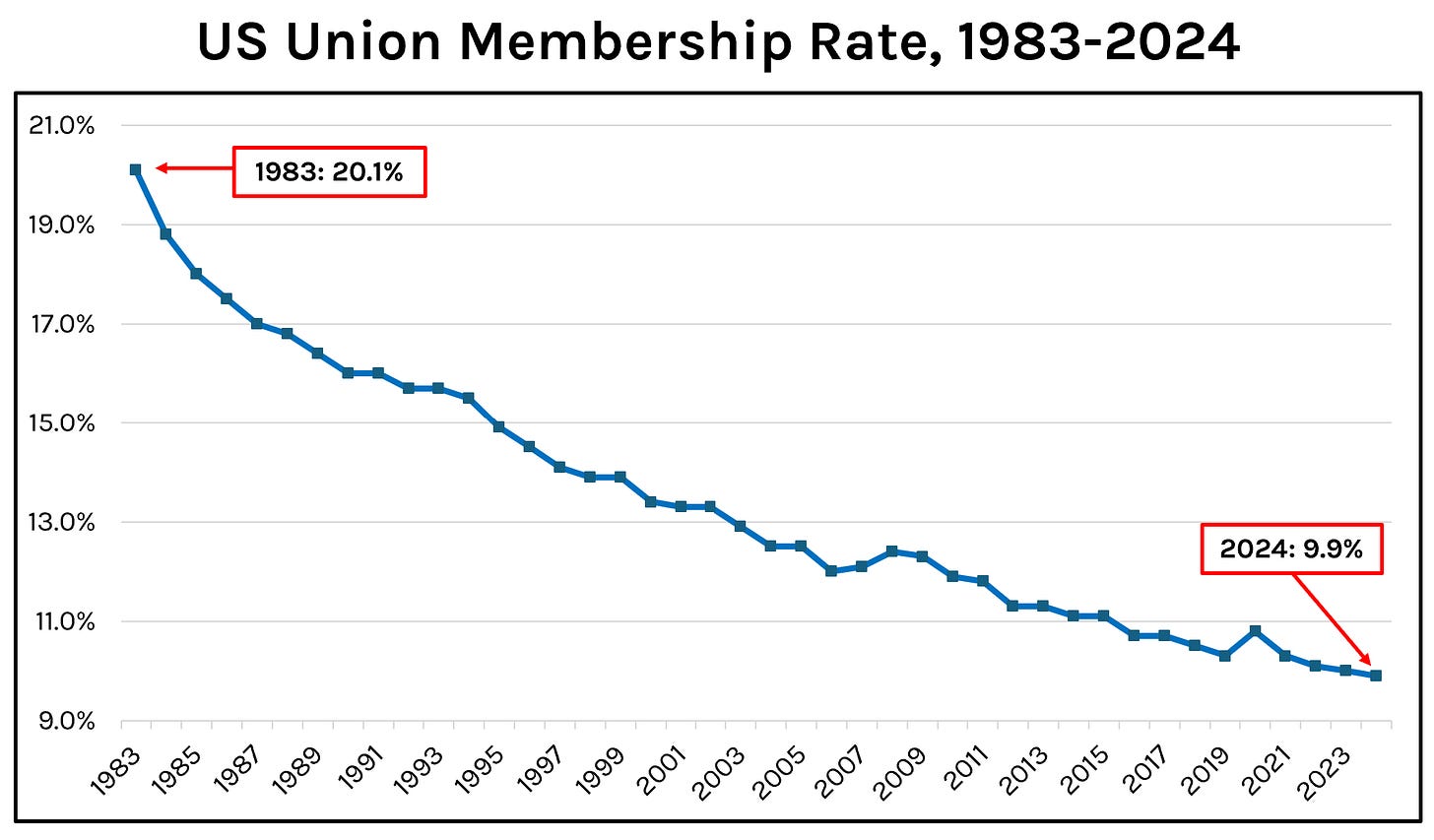
This drop in membership runs counter to the public’s growing support for organized labor. A recent Gallup survey found that 68% of US adults approve of unions. That’s +20 points above the all-time low hit in 2009 (48%), and it’s roughly back where public approval stood during the American High.
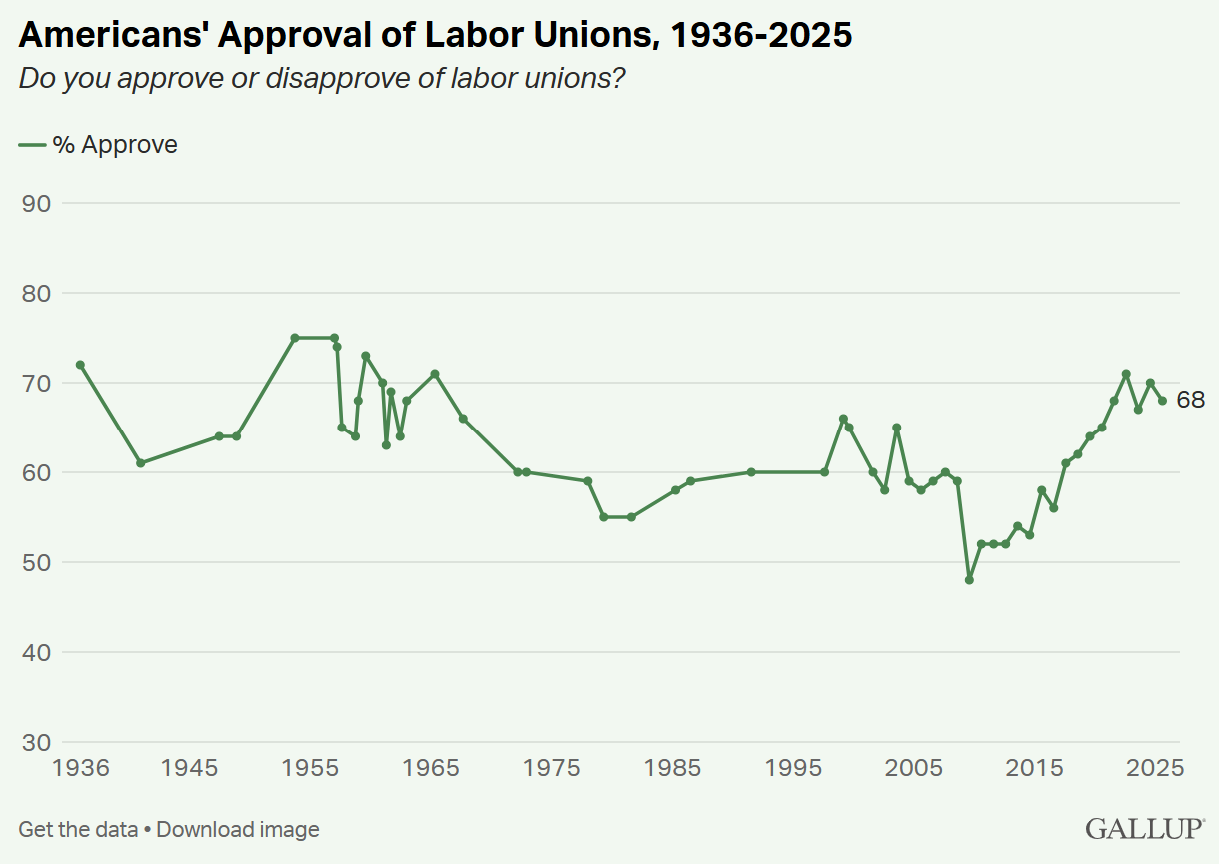
Moreover, a recent Pew report found that Americans are growing more uneasy about labor’s fading role. The share of US adults who say the decline in union membership is bad for workers rose +3 points to 62%. And the share who say the decline is bad for the country rose +6 points to 60%.
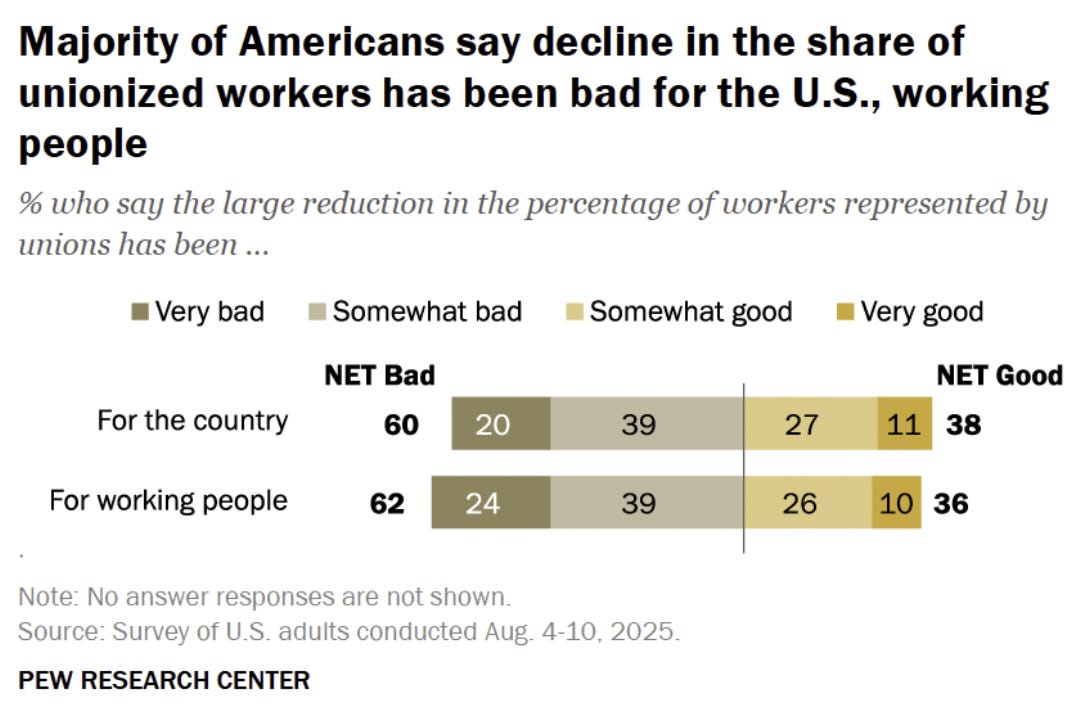
The partisan split is striking. Among Democrats, concern over union decline jumped sharply: Up +11 points on whether it’s bad for working people, and up +13 points on whether it’s bad for the country. Among Republicans, sentiment moved less steeply in the opposite direction: Both measures fell -3 points YoY.
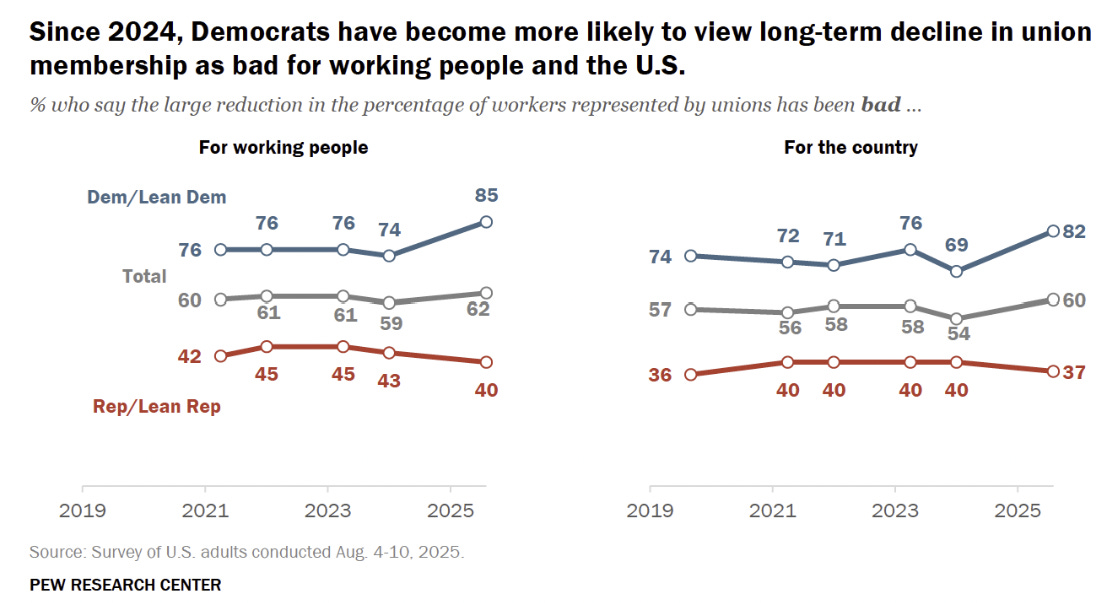
Among Republicans (though not among Democrats), support for unions varies sharply by age. Of all Republicans aged 18 to 34, 52% say the decline in union membership has been bad for workers. Of all those 65 and older, the share falls to just 27%. For most Republican Boomers who grew up in the heavily-unionized 1950s and early 1960s, nothing will ever change their negative opinion. Republican Millennials who grew up in the 1980s and ‘90s, on the other hand, are more likely to be union-curious.
Income shows a similar if smaller divide: 47% of lower-income Republicans see the decline as harmful, compared with only 35% of their higher-income counterparts. Chalk up many of these lower-income Republicans as recent MAGA converts from the Democratic party.
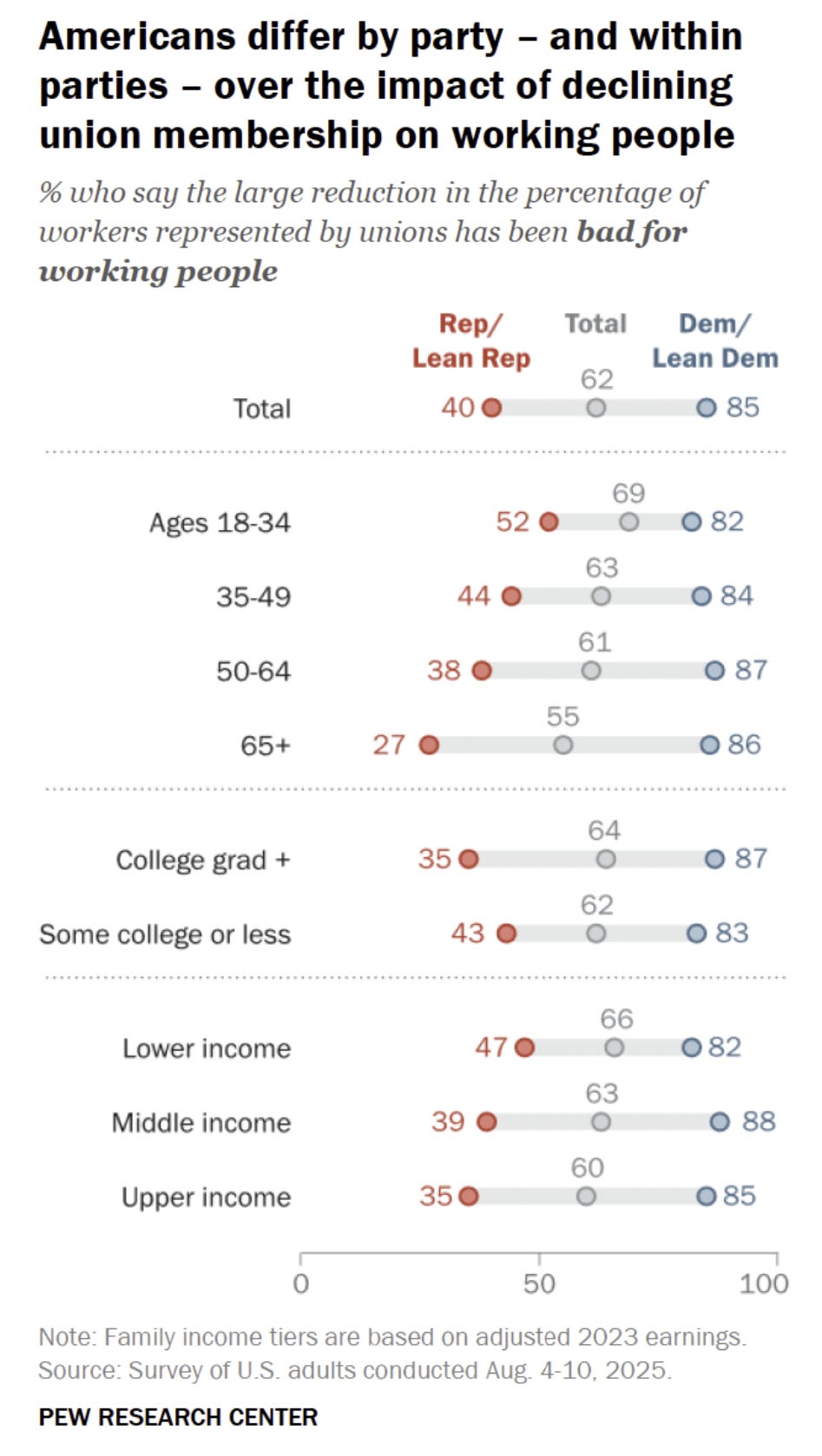
Given the public’s generally strong support for organized labor, will Trump’s assault on federal unions hurt him politically?
Probably not, because he’s carefully aiming his fire at the public-sector. We don’t have much survey data on this question, but I’d wager that public approval falls when respondents are asked exclusively about public-sector unions. It certainly falls among working-class MAGA Republicans. Trump can plausibly paint the largest of these unions—the likes of NEA, AFT, and AFSCME—as the beating heart of progressive “wokism.” No one doubts that their political contributions go overwhelmingly to Democratic candidates. Lunch-bucket private-sector unions, on the other side of the cultural divide, get a very different treatment. As we saw with the warm welcome he gave to the Teamsters at the 2024 Republican convention, Trump likes to praise their rank and file for their toughness and patriotism.
On balance, the net effect of Trump’s action will be to push the unionization rate down further in 2025. Consider that roughly half of all union members in America work for the public sector—and of these about 15% work for the federal government.
While Trump hasn’t abolished federal unions outright, he has gutted their core function. And with dues no longer deducted from paychecks, some members are likely to drift away, and entire unions may fold. On top of that, Trump’s mass layoffs have already swept out thousands of unionized federal employees, who will no longer be counted in next year’s totals.




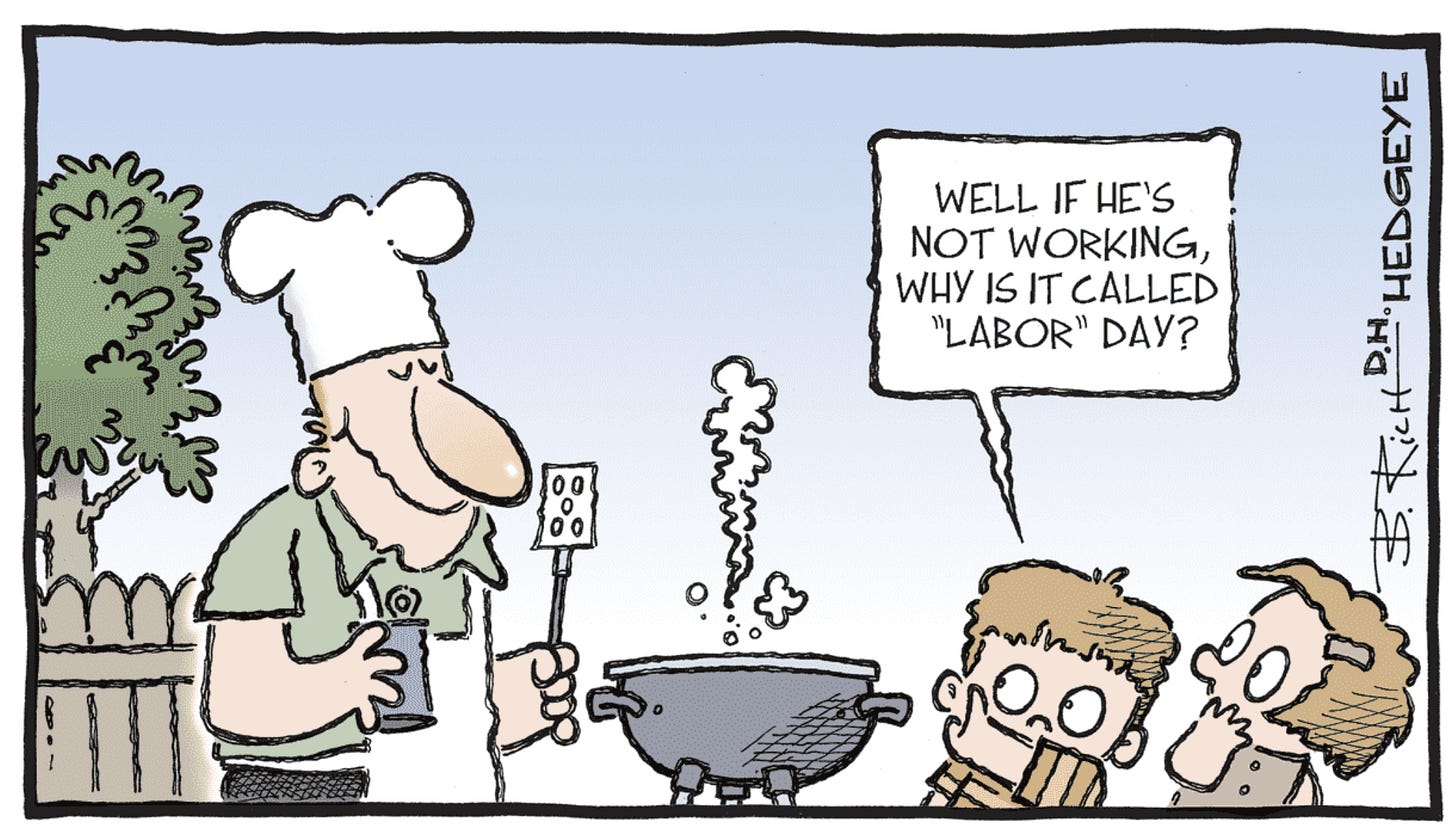
Hey Neil, Love your work. The deeper we get into the Trump-era, the more it feels to me like the Obama-era might have actually been an extension of the third-turning, and that the fourth turning might not have truly started until Trump rode down his golden escalator in 2015. It also feels like we are so deep into this, it's hard for me to imagine a true first-turning starting within 10 years of the present. Any chance the third-turning is more accurately dated something like 1985-2015, and the fourth-turning could be something like 2015-2045? The full saeculum would be 1945-2045, or a full century, which is in line with many of the ancient saeculums you identified in your book "The Fourth Turning is Here." Thanks.